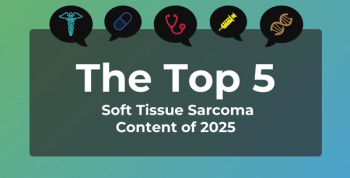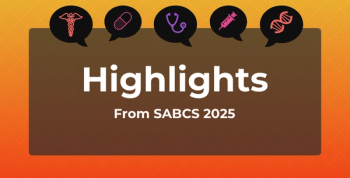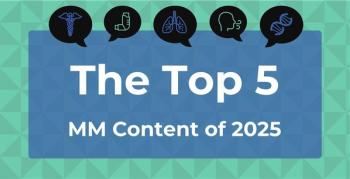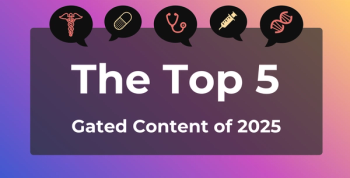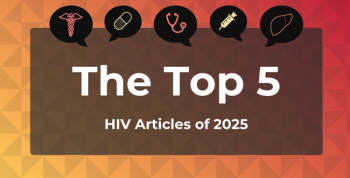
The Double-Edged Sword of Artificial Sweeteners
Key Takeaways
- Artificial sweeteners are popular for reducing sugar intake but may pose health risks, including metabolic disorders and appetite disruption.
- Despite FDA approval, the long-term safety of artificial sweeteners is debated, with studies linking them to insulin resistance and potential carcinogenicity.
The market for artificial sweeteners has been projected to increase by almost 75% from 2025 through 2033, or from $3.11 billion to $5.44 billion.
Artificial sweeteners—chemical compounds that include aspartame, neotame, saccharin, and sucralose, all of which are FDA approved1-3—have become a ubiquitous ingredient in modern diets, offering sweetness without the calories and often emerging as supposed guilt-free alternatives in a world where sugar is increasingly demonized for its role in
This article will explore some of the areas in which science and economics intersect on the use of artificial sweeteners, and it will examine several hidden health care costs, weighing whether these popular sugar alternatives come with a price tag that outweighs their perks, from direct medical expenditures to broader societal impacts and health care outcomes.
The Rising Use of Artificial Sweeteners
Adding sweeteners to food first entered global consciousness in the 1800s,5 but it wasn’t until the 1950s that those of the artificial variety entered the North American market.6 There also was a major surge in their uptake seen with the advent of the 21st century—by as much as 200% alone in adults from 1999 to 20007—driven by growing health concerns over sugar and the demand for low-calorie alternatives on supermarket shelves.
This trend was, and continues to be, fueled by several factors.
According to guidance from the CDC and the World Health Organization (WHO), daily added sugars should not exceed 10% of total daily calories for individuals 2 years and older, with reductions to 5% and below purported to have additional health benefits and guidance noting children younger than 2 should not be eating any foods with added sugars.8,9 However, with food costs on a seemingly never-ending upward trend, it is becoming increasingly difficult for many to afford to eat healthy, with the unfortunate alternative being cheaper processed foods.10
Research also shows that sugar substitutes may be beneficial for weight management in adults and children with overweight or obesity,3 as well as among people with type 2 diabetes, since artificial sweeteners are indigestible and do not elicit an insulin response8; hypertension5; and those wanting to prevent heart disease11—all by reducing their overall sugar intake. Many are even regulated as “safe for consumption” under the federal Food, Drug and Cosmetic Act and must first be approved by the FDA before they can be marketed.12,13
Potential Health Consequences
However, despite their growing use, the long-term safety of artificial sweeteners remains a subject of ongoing debate and contradictory study findings, raising questions about potential health consequences and future health care costs. Scientific opinion remains divided, with many studies reaching contradictory conclusions. Even as regulatory agencies deem them safe within approved limits,12,14 there is research that challenges the assumption that artificial sweeteners and sugar substitutes are harmless, linking them to several adverse health conditions that include metabolic disorders, appetite disruption, and neurological alterations. The WHO even made headlines in 2023 by labeling aspartame a possible carcinogen15—a claim with which the FDA disagrees.14
Two potential, and intertwined, metabolic disorders linked to artificial sweetener ingestion are insulin resistance and diabetes16,17—the latter a paradoxical effect knowing that some people with diabetes turn to no-sugar products or sugar alternatives following diagnosis. Research from 2020 shows that artificial sweeteners may affect glucose absorption and insulin and incretin (eg, glucagon-like peptide-1) secretion; aspartame and sucralose, in particular, correlated with glucose intolerance and insulin resistance.18 Another study found a 69% higher risk of developing type 2 diabetes in men and women who ingested above their median sex-specific daily limits,19 and data from 2015 show that the higher the diet soda consumption, the greater the weight gain.20
More recent research has implicated sucralose as an appetite trigger21—with findings that echo previous research17—due to the brain perceiving sweetness that does not entail necessary caloric intake. This tricked signaling has been blamed for increasing hunger signals, but not feelings of fullness, with the hunger sensation increased by as much as 17% following drinking something containing sucralose.
There are also data from over several decades showing that artificial sweeteners may trigger headaches or migraine,22-25 and that aspartame, in particular, may be linked to cancer.26
Direct and Indirect Economic Costs
Artificial sweeteners' potential health risks could burden health care systems and economies due to their suspected links to chronic conditions, which often demand costly long-term treatment. These expenses may include direct medical care, lost productivity, and higher insurance costs—with people who are uninsured often having to foot more out-of-pocket costs27—creating ripple effects beyond individual health, both for the US and globally.
For example, in Brazil, hospitalizations and procedural costs totaled more than US$14 million in 2019 alone for treatment of noncommunicable diseases linked to sweetened beverage consumption (including artificially sweetened sodas and juices).28 Within the US, as well, as recently as 2022, the American Diabetes Association saw an annual cost of diabetes of $412.9 billion, with $106.3 billion of that attributed to indirect costs, or a 35% increase over the previous 10 years.29 Some of these primary cost drivers are not only in-hospital services but reduced work productivity—to the tune of $35.8 billion for presenteeism and $5.4 billion for absenteeism. Further, this economic impact is not equally distributed, with Black Americans and older individuals often paying more.
Cancer costs are also extremely high, and could total $240 billion within 5 years, while costs from cardiovascular disease could hit $2 trillion by 2050.30
The Costs vs Benefits Debate
While more research is needed to establish causation, the cumulative financial strain—from hospitalizations to workforce declines—suggests artificial sweeteners could carry a hidden economic toll that rivals their perceived benefits. Further, despite research showing they may aid in weight management and diabetes prevention for some, research also suggests potential risks that cannot be ignored. As science continues to evolve, consumers and policymakers alike must carefully balance the immediate benefits of artificial sweeteners against their possible hidden consequences.
References
- Bourgeois CR. Top artificial sweeteners for your health and what to avoid. Health. January 15, 2025. Accessed June 29, 2025.
https://www.health.com/best-and-worst-artificial-sweeteners-7974926 - Persellin K. Surprise! some of your favorite foods may contain artificial sweetener. Environmental Working Group. November 27, 2023. Accessed June 29, 2025.
https://www.ewg.org/news-insights/news/2023/11/surprise-some-your-favorite-foods-may-contain-artificial-sweetener - Mayo Clinic staff. Artificial sweeteners and other sugar substitutes. Mayo Clinic. January 10, 2023. Accessed June 29, 2025.
https://www.mayoclinic.org/healthy-lifestyle/nutrition-and-healthy-eating/in-depth/artificial-sweeteners/art-20046936 - The food and drink you didn't know had sweeteners in them. Newsweek. June 25, 2023. Accessed June 29, 2025.
https://www.newsweek.com/food-drink-artificial-sweeteners-diet-weight-loss-1807667 - Chen SW, Shen ZW, Hua ZL, Li XQ. Global development and future trends of artificial sweetener research based on bibliometrics. Ecotoxicol Environ Saf. 2023;15:263:115221.doi:10.1016/j.ecoenv.2023.115221
- Basson AR, Rodriguez-Palacios A, Cominelli F. Artificial sweeteners: history and new concepts on inflammation. Front Nutr. 2021;8:746247. doi:10.3389/fnut.2021.746247
- Sylvetsky AC, Jin Y, Clark EJ, Welsh JA, Rother KI, Talegawkar SA. Consumption of low-calorie sweeteners among children and adults in the United States. J Acad Nutr Diet. 2017;117(3):441-448.e2. doi:10.1016/j.jand.2016.11.004
- Be sugar smart: Limiting added sugars can improve health. CDC. Accessed June 30, 2025.
https://www.cdc.gov/nutrition/data-statistics/pdfs/be-sugar-smart-2022-h.pdf - WHO calls on countries to reduce sugars intake among adults and children. News release. World Health Organization. March 4, 2015. Accessed June 30, 2025.
https://www.who.int/news/item/04-03-2015-who-calls-on-countries-to-reduce-sugars-intake-among-adults-and-children - Santoro C. The high cost of healthy: how grocery prices shape American diets and health. AJMC®. June 24, 2025. Accessed June 30, 2025.
https://www.ajmc.com/view/the-high-cost-of-healthy-how-grocery-prices-shape-american-diets-and-health - Wadyka S. Sugar substitutes are everywhere—even in these surprising foods. Consumer Reports. September 5, 2024. Accessed July 1, 2025.
https://www.consumerreports.org/health/sugar-sweeteners/sugar-substitutes-are-everywhere-a7920296958/ - Aspartame and other sweeteners in food. FDA. February 27, 2025. Accessed June 29, 2025.
https://www.fda.gov/food/food-additives-petitions/aspartame-and-other-sweeteners-food - How sweet it is: all about sweeteners. FDA. June 9, 2023. Accessed July 1, 2025.
https://www.fda.gov/consumers/consumer-updates/how-sweet-it-all-about-sweeteners - Sweeteners. European Food Safety Authority. April 30, 2025. Accessed June 29, 2025.
https://www.efsa.europa.eu/en/topics/topic/sweeteners - What we’re reading: new CMS proposals; WHO's aspartame warning; reasonable COVID-19 vaccine prices. AJMC. July 14, 2023. Accessed June 29, 2025.
https://www.ajmc.com/view/what-we-re-reading-new-cms-proposals-who-s-aspartame-warning-reasonable-covid-19-vaccine-prices - Mathur K, Agrawal RK, Nagpure S, Deshpande D. Effect of artificial sweeteners on insulin resistance among type-2 diabetes mellitus patients. J Family Med Prim Care. 2020;9(1):69-71. doi:10.4103/jfmpc.jfmpc_329_19
- Yunker AG, Alves JM, Luo S, et al. Obesity and sex-related associations with differential effects of sucralose vs sucrose on appetite and reward processing: a randomized crossover trial. JAMA Netw Open. 2021;4(9):e2126313. doi:10.1001/jamanetworkopen.2021.26313
- IizukaK. Is the use of artificial sweeteners beneficial for patients with diabetes mellitus? the advantages and disadvantages of artificial sweeteners. Nutrients. 2022;14(21):4446. doi:10.3390/nu14214446
- Debras C, Deschasaux-Tanguy M, Chazelas E, et al. Artificial sweeteners and risk of type 2 diabetes in the prospective NutriNet-Santé cohort. Diabetes Care. 2023;46(9):1681-1690. doi:10.2337/dc23-0206
- Diet soda linked to increases in belly fat in older adults. News release. Wiley. March 17, 2015. Accessed July 2, 2025.
https://www.wiley.com/WileyCDA/PressRelease/pressReleaseId-116822.html - Luo S, Monterosso JR, Sarpelleh K, Page KA. Differential effects of fructose versus glucose on brain and appetitive responses to food cues and decisions for food rewards. Proc Natl Acad Sci U S A. 2015;112(20):6509-6514. doi:10.1073/pnas.1503358112
- LiptonRB, Newman LC, Cohen JS, Solomon S. Aspartame as a dietary trigger of headache. Headache. 1989;29(2):90-92. doi:10.1111/j.1526-4610.1989.hed2902090.x
- Van den Eeden SK, Koepsell TD, Longstreth WT Jr, van Belle G, Daling JR, McKnight B. Aspartame ingestion and headaches: a randomized crossover trial. Neurology. 1994;44(10):1787-1793. doi:10.1212/wnl.44.10.1787
- Kaya J. Are artificial sweeteners harmful? the truth. Medium. September 1, 2022. Accessed July 1, 2025.
https://medium.com/beingwell/are-artificial-sweeteners-harmful-the-truth-296e5169128a - Foods that trigger migraine attacks are different for everyone, but some common suspects include caffeine, aged cheese, red wine and artificial sweeteners. Norton Healthcare. March 21, 2024. Accessed July 1, 2025.
https://nortonhealthcare.com/news/foods-that-trigger-migraines/ - Sharma, H., Hilal, A., Aseri, G.K. et al. Sweet or sour? a review of the aspartame market landscape, carcinogenicity, and its socioeconomic impact. J Food Sci Technol 2025;62(1):24-37. doi:10.1007/s13197-024-06077-y
- Report on the affordability of insulin. HHS. December 16, 2022. Accessed July 2, 2025.
https://aspe.hhs.gov/sites/default/files/documents/b60f396f32e29a2a9469276d9ca80e4b/aspe-insulin-affordibility-rtc.pdf - Leal JSV, Fogal AS, Meireles AL, de Olivera Cardoso L, Machado IE, de Menezes MC. Health economic impacts associated with the consumption of sugar-sweetened beverages in Brazil. Front Nutr. 2022;9:1088051. doi:10.3389/fnut.2022.1088051
- New American Diabetes Association report finds annual costs of diabetes to be $412.9 billion. News release. American Diabetes Association. November 1, 2023. Accessed July 2, 2025.
https://diabetes.org/newsroom/press-releases/new-american-diabetes-association-report-finds-annual-costs-diabetes-be - Fast facts: health and economic costs of chronic conditions. CDC. July 12, 2024. Accessed July 2, 2025.
https://www.cdc.gov/chronic-disease/data-research/facts-stats/index.html
Newsletter
Stay ahead of policy, cost, and value—subscribe to AJMC for expert insights at the intersection of clinical care and health economics.

